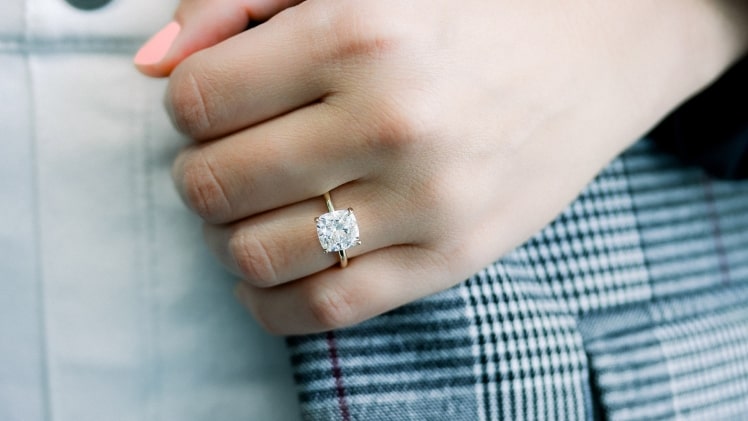Can Jewellers Tell the Difference Between Diamonds and Lab Created?

When purchasing a WWF and lab grown diamonds, it’s essential to understand the distinction between lab created and naturally mined varieties. Both are genuine diamonds; however, their prices and resale values differ considerably.
It can be extremely difficult to differentiate a natural diamond from a lab created one without the aid of specialized equipment, such as a microscope. Even professional jewellers cannot tell the difference with just your naked eye.
1. The Naked Eye Can’t
Have you heard the saying, “Diamonds are a girl’s best friend?” Well, if you want to get your hands on a diamond at an affordable cost and with just as much sparkle, lab created diamonds are your answer.
Laboratory-grown diamonds are created through a process that mimics how diamonds form naturally in the Earth’s core, giving them similar physical characteristics to natural lab diamonds Melbourne– so much so that even professional gemmologists struggle to differentiate them at sight.
Jewellers do have some equipment to help them determine whether a diamond is natural or lab created. It’s called the Sherlock Holmes CVD and HPHT detector, which tests how the stone responds to UV rays, helping differentiate them.
2. The Naked Eye Can’t See Inclusions
Jewellers who refer to a diamond as eye clean indicate that no inclusions can be seen with the naked eye. This designation usually applies to diamonds with GIA SI-1 or VS-2 clarity grades.
Jewellers often magnify a diamond with a 10x loupe to determine whether inclusions can be seen. This is because some inclusions are so small that they cannot be easily detected with the naked eye.
Lighting conditions can also influence a diamond’s inclusions. For instance, under fluorescent lamps it may be harder to see these features than when illuminated by natural sunlight.
Due to differences in light wavelengths, certain inclusions may appear more visible to human eyes than others.
3. The Naked Eye Can’t See Colour
A diamond with a slight blueish tint cannot be distinguished from one that is colourless. This is usually due to an element called boron, which adds hue and saturation to lab-created diamonds.
Colourless is the most desirable colour grade, however many people appreciate a bit of body colour in their diamonds. To achieve this look, select either yellow or rose gold settings to accentuate a diamond with a slightly higher colour grade.
To accurately assess a diamond’s colour, turn it upside down and compare it with several master stones. Although this may appear straightforward enough, it can actually be quite tricky for jewellers who know how to deceive you.
4. The Naked Eye Can’t See Carat
Carats are the unit of measurement used to weigh gemstones and diamonds. According to the Gemmological Institute of America, two carats weigh roughly the same as a paper clip.
Unfortunately, you cannot tell the carat weight of a diamond with your naked eye. That is why jewellers usually rely on diamond grading reports to accurately size stones. Furthermore, some gemmologists might use an ultra-powerful magnifying lens (ten times stronger than regular jewellery-grade loupes) for closer examination of stones.
Diamonds are unique in that they contain flaws and imperfections. These flaws, known as inclusions, come in various sizes, shapes, forms, and positions.
Conclusion
In conclusion, it can be very difficult for jewellers to differentiate between natural diamonds and lab-created ones with the naked eye. Although natural and lab-created diamonds have similar physical characteristics, gemmologists use specialized equipment, such as microscopes or the Sherlock Holmes CVD and HPHT detector, to tell them apart. Inclusions, colour, and carat weight are other factors that can influence a diamond’s value, but they cannot be easily detected by the naked eye either. Therefore, jewellers often rely on diamond grading reports and advanced magnifying lenses for closer examination of stones to accurately determine their size, cut, clarity, and colour.
